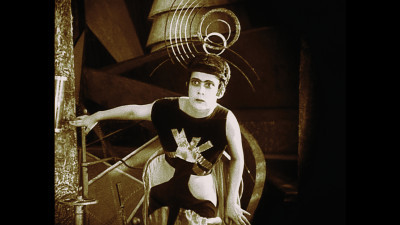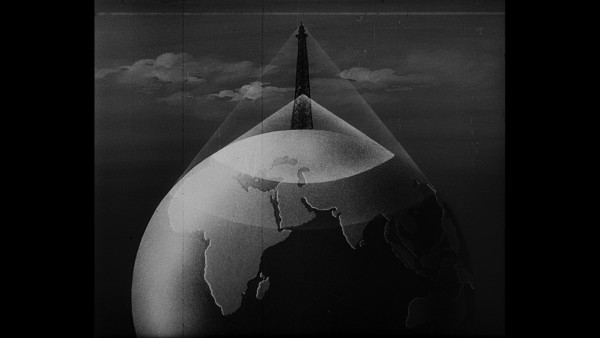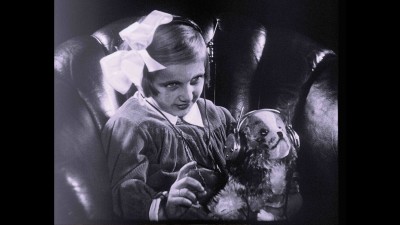INTERVIEW: Martin Reinhart rewires ‘Dreams’ in new documentary

Dreams Rewired, the new documentary currently playing New York City’s Film Forum, journeys through the advent of several communication technologies. The advancements of radio, TV, the phonograph and other devices offer commentary on society and the collective history of how humans have communicated their lives to others. The film is co-directed by Martin Reinhart, Manu Luksch and Thomas Tode, and it represents the culmination of a cinematic process that took more than a decade to achieve.
Reinhart, who recently spoke with Hollywood Soapbox, has a career immersed in film. He invented the tx-transform, “a film technique that transposes the time axis, t, and one of the space axes, x,” according to the documentary’s official website. He has also developed a mechanism to execute extreme dolly zooms and a light, high-resolution 3D camera system. If that were not enough, he’s the director of several short films and serves as curator of photography at Vienna’s Museum of Technology. This last accomplishment helped give birth to Dreams Rewired.
“So everything started back in the year 2000, and I was working as a curator at the Technical Museum in Vienna at the time,” Reinhart said. “And I found, you know, the entry of an object in our database, which read discs or disc Potemkin, nothing else. … And so I looked out for this object and could not find it for almost two years. … I went through the correspondence of my department and found a note that in 1982 this object has been lended or borrowed by another institution, and so I went to this institution and finally got what this inventory number was about. And it turned out to be 15 phonograph discs, which are the soundtrack for a lost version of Battleship Potemkin … with Edmund Meisel’s original musical score, which was thought to be lost.”

This discovery led to Reinhart starting a reconstruction project and trying to bring the lost sound version to the screen. To help with the initiative, his team employed the help of a friend who was curator for silent movies at a television station and also had a “keen interest in Edmund Meisel’s compositions.”
“I just told her that we just found the soundtrack to Battleship Potemkin by Meisel,” he said. “She could not believe it, and so we decided that she would get the exclusive rights to show the Potemkin reconstruction. And as a little kind of deal, she would play a documentary that Thomas Tode and I would do in connection with this finding of the discs, so we got a little budget for a 30-minute documentary. And we started to kind of look out for material around Potemkin and around the … change between … silent movies and sound movies in between 1928 and 1930, and especially we were interested in sound experimentation at the time.”
As Tode and Reinhart investigated the field, it became clear that the archival footage was connected in so many rich, unexpected ways.
“So the idea of cinema that it started as a silent movie, and then it became a sound movie, and then it was color, and it turned out to be television” was not exactly true, Reinhart said. “All of these things were actually there all the time. … The first television recordings were actually made before Jazz Singer was shown in the cinema, and everyone you would talk to would say, ‘Well, television is something that came later.’ But it’s not true, and so we, out of this kind of initial idea to make a short documentary that would go together with the sound version of Potemkin, we developed something that became much bigger than we initially thought. And the movie project got bigger and bigger and bigger, and in the end, we had, I don’t know, some 100 hours of archival material we gathered from archives all over the world. And, yeah, this was the foundation of the movie as it is today.”

The co-directors knew of plenty of archives around the world and had good friends at institutions, so gaining access to the material for Dreams Rewired was not a problem. The main issue was finding the excerpts they needed in the hours and hours of footage.
“It’s hidden in news reels,” he said. “It’s hidden in advertisement material. It’s hidden in feature films, and from the title alone, it’s very difficult to tell what you see. … You develop a kind of a seventh sense where you find something, and sometimes we just imagined that this kind of shot must exist somewhere. … It’s almost like we projected it into reality. For example, we were looking for a shot where someone was speaking into the phonograph while he was dying, and we had not heard about any movie where this was shown. And one day it just popped up. I could not believe my eyes. It actually was there. This also was the way how the film was made. We were looking for certain images and sounds, others, which we did not expect. It was going backward and forward all the time, so we had to process what we had found. And sometimes we found pictures that were better than we expected them or more interesting, and other things we could not find at all. So it was a very long process of reviewing and reviewing the material over and over again because at first sight you often miss things.”
This long process took about a dozen years to complete. Actually, Tode and Reinhart made an earlier film that was not accepted by the TV station, so they had a completed film but no distributor. This is when Luksch entered the picture.
“This was where I called Manu, who is a friend of mine, and asked her for her help,” he said. “And she watched what we have done, was completely mesmerized and agreed to work over the movie again. … It was not at all like the classical way to make a movie. It was one step further and two steps behind, a very difficult process for everyone actually.”
In the finished project, Tilda Swinton offers a poetic narration to accompany the archival footage of radios, televisions and telephones. However, what’s missing from the documentary are academics and other talking heads trying to contextualize the history on screen. This was a purposeful decision on the part of the co-directors.
“We want some kind of guide that would take you through film history and a voice that would be almost like your friend or something, someone who would closely look at the pictures and detect things in the footage and comment on this,” Reinhart said. “So we never wanted this kind of an expert that would explain something to you. This was there from the beginning, and I’m actually happy that this initial idea survived throughout the whole making of the movie.”
Along the way, Reinhart discovered a lot of new information. He certainly understood much about the history of communication, but he didn’t realize the intricacies of how the people at the time comprehended the momentous inventions and their intended or unintended effects.
“Just to give you one example, which was extremely interesting for me, we were looking for movies that would show television before television,” he said. “So film from the 1920s that would imagine how television would look like if it was commonly in use, and the surprising thing was that we found that television at this time was almost exclusively a surveillance technology that was not at all understood as entertaining. But in contrary, there were a lot of movies where the videos were … television sets in order to spy on the victims. It was a very different way to think about television than we would have expected.”
This sense of discovery Reinhart hopes will spill out into the audience. He said filmgoers will hopefully walk away from Dreams Rewired with more interest in the history on display and perhaps a reduction in the anxiousness and fear that is often connected with media.
“These questions that we ask ourselves today in looking at this kind of media situation we have now, and all those fears and fantasies, that they are not new, that the same fantasies occurred when the telephone was introduced or the radio was introduced,” he said. “I can remember the time when the Internet was new. People thought wow this will be a completely new way to establish democratic structures.”
He added: “We actually learn more about today than about history.”
By John Soltes / Publisher / John@HollywoodSoapbox.com
- Dreams Rewired is currently playing New York City’s Film Forum. Click here for more information.

